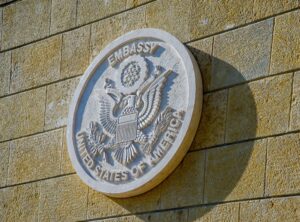One in three (17.9 million) NHS patients in England are registered at a GP practice that exceeds the World Health Organisation annual limit for PM2.5 air pollution, UK100 analysis of air pollution data has revealed.Â
Last month the government published its Clean Air Strategy, which included measures that it believes will save the NHS £1.7bn a year by 2020, rising to £5.3bn a year from 2030, due to improved air quality.
However, the UK100 analysis paints a bleak picture of the current situation at GP practices across the country.
London has by far the biggest numbers, with 7.5 million patients attending a surgery that breaches WHO air pollution limits, representing three-quarters of the GP population.
However, their analysis revealed some of the worst affected areas are outside London. The top 10 most polluted GP practices are located in Barrow in Furness, Lowestoft, Penzance, Ipswich and Portsmouth.
Birmingham has the most numbers of patients at toxic GP surgeries, with nearly half a million patients registered in areas that exceed WHO air pollution limits. This is followed by a number of London boroughs including Lambeth, Newham and Wandsworth.
The research is being published ahead of a major Clean Air Summit being hosted in London on February 14 to be attended by the London Mayor Sadiq Khan as well as mayors and council leaders from across England. They are due to be joined by Environment Secretary Michael Gove, Health Secretary Matt Hancock, and the Chief Executive of the NHS, Simon Stevens.
The summit is expected to call for new legislation and funding to provide powers to elected mayors and local councils to tackle air pollution in a new Clean Air Act, planned for later in the year. Recommendations may include the creation of local clean air zones where the most polluting vehicles will be fined for entering which are being planned in London and Manchester.
Simon Stevens, chief executive of NHS England said: ‘Air pollution causes thousands of hospital admissions and early deaths every year, but while doctors, nurses and therapists are treating the health consequences, the NHS is also taking action to tackle the problem at source.
‘The NHS has already cut its carbon footprint by 11% between 2007 and 2015 and now we are working to cut emissions from the NHS fleet by 20% by 2024, with at least 90% of vehicles using ultra-low emission engines.
‘Bold action like this has been estimated to help avoid over 50,000 cases of coronary heart disease and almost 10,000 cases of asthma by 2035. The UK100 summit this week is an important opportunity to come together and focus on the next steps we can all take to ensure a happier, healthier future for everyone.’
Dr Penny Woods, chief executive of the British Lung Foundation, added: ‘It’s just not acceptable that nearly 18 million people are breathing unsafe levels of air pollution when seeking medical care from their GP. We know that our society’s most vulnerable people — especially children, the elderly and those with heart and lung problems — are most at risk from air pollution.
‘More must be done to keep them and health care staff safe; the World Health Organisation’s limit on particulate matter pollution should be included in the upcoming Environment Bill to ensure we meet it.’












